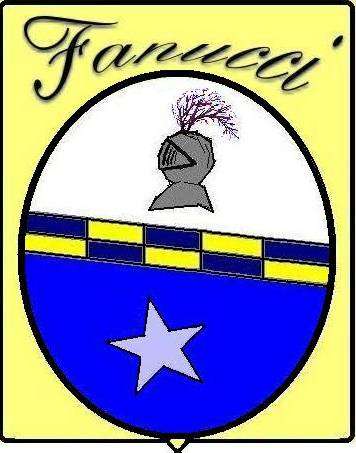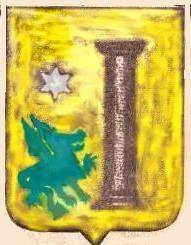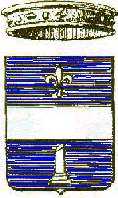 For a better understanding of the origin of the last names it needs to go back in time up to the ancient Romans. In archaic times it was only the name that was present, but starting with the last centuries of the Republic, around the Romans it was widespread the use of the three names (tria nomina): Marco Tullio Cicerone, for instance, where Marco is the first name (prenomen), individual name, Tullio is the name (nomen) of the people (gens) of affiliation, in this case the gens Tullia, and Cicero is the last name (cognomen), that can be found to the origin for mostly met nickname in order to distinguish the various homonyms.
For a better understanding of the origin of the last names it needs to go back in time up to the ancient Romans. In archaic times it was only the name that was present, but starting with the last centuries of the Republic, around the Romans it was widespread the use of the three names (tria nomina): Marco Tullio Cicerone, for instance, where Marco is the first name (prenomen), individual name, Tullio is the name (nomen) of the people (gens) of affiliation, in this case the gens Tullia, and Cicero is the last name (cognomen), that can be found to the origin for mostly met nickname in order to distinguish the various homonyms.
Once fallen the Roman Empire, the return to a sole name happened, with an endearing in the family ambient, accompanied by something that alludes to the characteristics of the person or to the place of origin or to the paternity.
In Italy, the last names are a first prerogative of the rich families, but in 1200 in Venice and in the following century in other areas, even if with some resistance and delay, this use extends to the least well-to-do layers of the population. Setting the Italian last names is generally dated between the end of the Middle Age and the Modern Age, when the birth and the affirmation of institutions and administrative procedures enacted by law the obligation of the immutability of the last name.
The XII century is the moment when the system of denomination founded only upon the individual name reveals itself as being inadequate.
The notaries particularly careful in editing the documents and in order to avoid every possible confusion on the identity of the people summoned, started to insert all the references to the fatherly descent.
However, it is only at time of the Council of Trento, in 1564, when the priests are charged with the obligation to keep an orderly register of the baptisms by name and last name, aiming to avoid marriages among blood relatives. The nickname or the second name become thus hereditary.
The last name competes to identify an individual from the social, family and geographical point of view and at the same time the element that made it possible to be assimilated or distinguished.
We should keep in mind anyway that once settled these last names, one of the main characteristics was their instability due mainly to the ignorance spread everywhere and which didn't allow to check how somebody’s own last name was transcribed in the various public documents. That was the reason why it often happened that the last names were mangled both for problems of transcription or pronunciation (for example Fanucci in Fannucci or in Fagnucci or also Fanuzzi).
The naming system of the people denomination uses the late Latin and Christian model that privileges the individual name using both the ancient cognomens and new names, particularly names of traders and physical or moral attributes of the person (Es. Fabbri =Blacksmiths, Grandi=Greats, Belli=Beautifuls). To these are usually added, beginning with the barbaric epoch, two seams of traditional naming: the agionimi, Christians or biblical (names of Saints or Patriarchs), and the names of Germanic origin.
The naming components that can be met in the last names are essentially three: the patronymic (or the mattronymic), the toponymic that points out the registry residence and the nickname.
 In our case there are at least two possible hypotheses: it could be possibly the hypothesis that the last name Fanucci is coming from an abbreviation of endearing diminutive Stefanucci of Stefani or Stefano occurred in remote epoch; or, paying all the attention on the root of the last name and also on its geographical distribution, the second hypothesis could be related to the city of Fano in the region of Marche.
In our case there are at least two possible hypotheses: it could be possibly the hypothesis that the last name Fanucci is coming from an abbreviation of endearing diminutive Stefanucci of Stefani or Stefano occurred in remote epoch; or, paying all the attention on the root of the last name and also on its geographical distribution, the second hypothesis could be related to the city of Fano in the region of Marche.
In fact, it wouldn’t be considered as casual that the geographical distribution of this last name in the Marche area handed really to this city, which owes its name deriving from the temple "Fanum Fortunae", devoted by the Romans to the goddess of the Fortune during the Roman epoch. Here is also the opinion sent to us (in January 2005) by Dr. Euro Puletti from Costacciaro (PG) name etymology expert, who exposes his thesis as follows:
" To my notice, the last name Fanucci represents very probably an ipocoristico aferetico (i.e. a diminutive that has lost its initial part) of a naming form such as the model of Cristofanucci (or Stefanucci), such as, similarly, Fanini (a last name met also in Perugia area) could constitute for Cristofanini and Fanelli of Cristofanelli, etc." (See the Appendix ONLY IN ITALIAN LANGUAGE)
 As we have often mentioned, the last names suffered for sure errors of transcription and this has happened also in the case of Fannucci (a few in Italy and in the U.S.A.), the error could have also happened for the last names very similar to ours: Fanuzzi, Fenucci, Finucci, Fanucchi, Panucci and Ranucci.
As we have often mentioned, the last names suffered for sure errors of transcription and this has happened also in the case of Fannucci (a few in Italy and in the U.S.A.), the error could have also happened for the last names very similar to ours: Fanuzzi, Fenucci, Finucci, Fanucchi, Panucci and Ranucci.
The last searches documented on the registers of the baptisms and the deaths at Scheggia and Gubbio tell us that between 1600 and 1700 the priests and the notaries used to transcribe the last name of our ancestors in the most varied ways, from DE FANUCCI to FAINUCCI, FAGNUCCI and FAINUZZI and also latinated in DE FANUCCIS or DE FANUTIJS or FANUTII or FANUTIUS. (See the list of the Baptisms and the Deaths of Scheggia in 1600)
Some of the few FAGNUCCIs who are today residents only to Umbertide derive probably from the FAGNUCCIs of Scheggia. Then, at about the end of 1700, the last name is definitely stabilised in FANUCCI and today in Italy the other forms are not found anymore except a few Fagnucci and Fanuzzi.
To this point, not being necessary to find certain comparisons to our hypotheses, and not helping us too much, the two noble coats of arms of the Fanuccis from Umbria and those from Tuscany that you can see in the relative chapters, we attach herewith the maps of the last name diffusion drawn by the interesting site http://www.labo.net and invite whoever is in possession of any useful material, heraldic studies or family coats of arms to contact us for an exchange of opinions.....